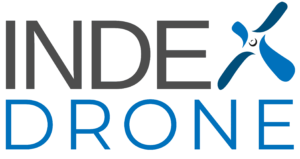Frequently Asked Questions
Drones, also known as Unmanned Aerial Vehicles (UAVs), are legal to operate in India. On August 26, 2021, India’s Ministry of Civil Aviation (MoCA) issued a new drone policy that formalized a draft regulation released earlier this summer.
- Nano – weight up to 250g
- Micro – weight between 250g and 2kg
- Small – weight between 2kg and 25kg
- Medium – weight between 25kg and 150kg
- Large – weight over 150kg
- A UIN (Unique Identification Number) is required.
- For the registration, you would need to provide address proof.
- A permit from the police and one from the telecommunication department.
- You will need to give the specifications of the drone to the authorities.
- The company from which you purchased should be Indian.
LiDAR drones are any drones made to carry a LiDAR sensor. They are used to collect data that can be used to make detailed 3D models for a variety of applications and industries.
Whether you’re surveying a forest, investigating the cause of a late-night automobile accident, or mapping an eroded shoreline, LiDAR sensors can help provide some of the most accurate and high resolution 3D models available.
Hyperspectral sensors capture gigabytes (and sometimes even terabytes) of spectral data. Typically viewed as a three-dimensional hypercube, hyperspectral data represents the entire spectrum of each pixel in a given image. Analysts can use this reflectance profile to:
- Measure plant health and identify plant disease
- Assess water quality
- Perform precise vegetation index calculations
- Determine mineral and surface composition
- Fill spectral sensing
- Conduct spectral index research
The government of India has banned import of foreign manufactured drones except for those required for defence, security and R&D purposes.
The decision has been taken with a view to promote local manufacturing under Make in India scheme. Import of drone components however will be permitted as earlier and will not require any approvals.
It totally depends on the customer whether he/she wants to buy or rent a drone. However, renting a drone is a better alternative versus spending money on a drone that will only be used once or occasionally.
Drone hire has many benefits, including cheaper upfront costs, greater flexibility and dynamic scaling, and providing the option of try before you buy. For further query you can contact us.
The Beyond Visual Line Of Sight operation or BVLOS refers to the operation of Unmanned Aerial Vehicles (UAV’s) or drones at distances beyond the operator’s viewing range.
Having the capacity to fly drones beyond visual line of sight (BVLOS) is an important factor in aerial security. The next generation of drone security solutions will be possible because of BVLOS flights. It will improve monitoring and surveillance in areas that were previously difficult to access.
Yes. Earlier, a 100 hour Drone delivery breakthrough was achieved in delivery of food and medicines in India via BVLOS operation.
There are trials but BVLOS not allowed so not viable at scale yet.
Drone applications are innovative ways in which drones are used to make business processes safer, more efficient and/or more profitable. By applying a drone in a unique way to solve a problem, the drone industry has grown exponentially and continues to expand into new industries.
No, we are a platform and have vetted vendors prior to listing their products but cannot take responsibility for an issue with the product/service, with payments, etc.
Feel free to write us at contact@indexdrone.com so we can assist you in navigating to your options.
The restrictions of drones flying in India are stated below.
- A micro drone may not fly higher than 60 meters above ground level (AGL) or faster than 25 meters per second.
- A small drone may not fly higher than 120 meters above ground level or faster than 25 meters per second.
- Drones that are medium or large must fly in compliance with the conditions outlined in the DGCA’s Operator Permit.
- Prohibited zones are completely off-limits, whereas restricted areas require prior approval from the DGCA.
